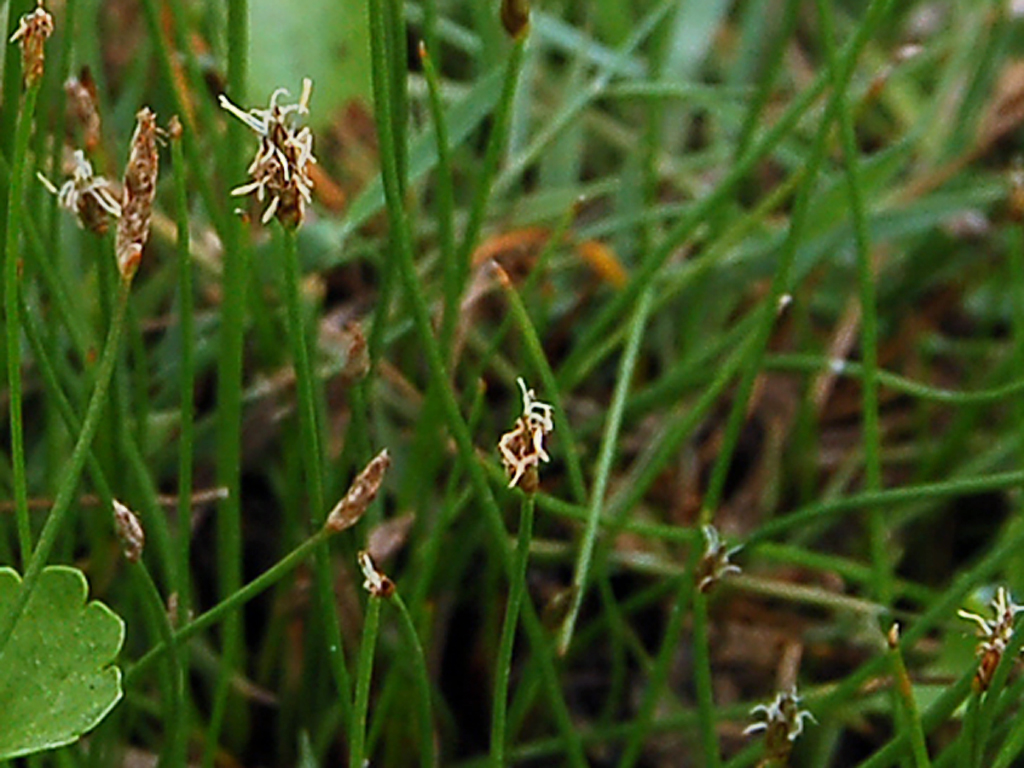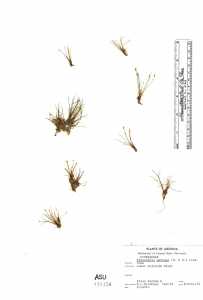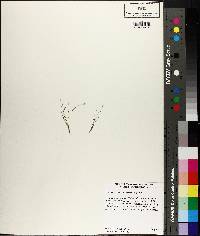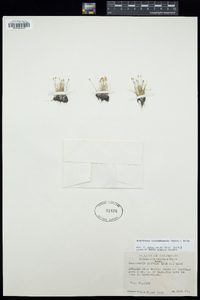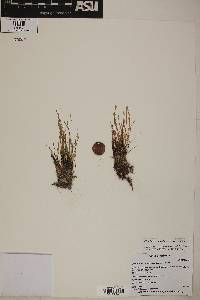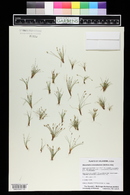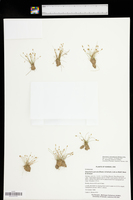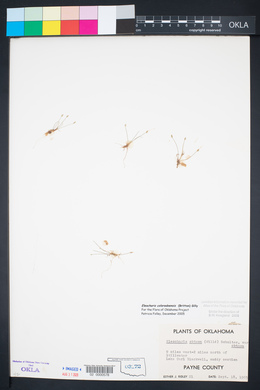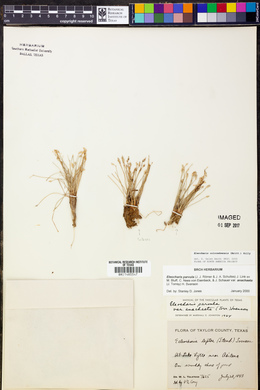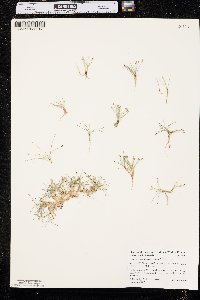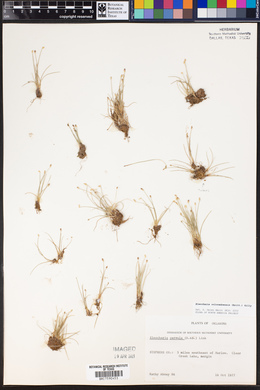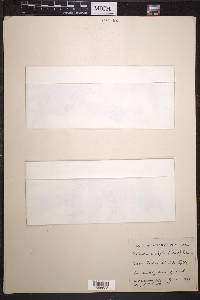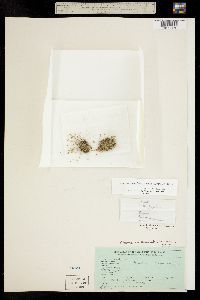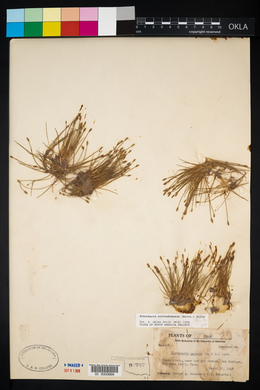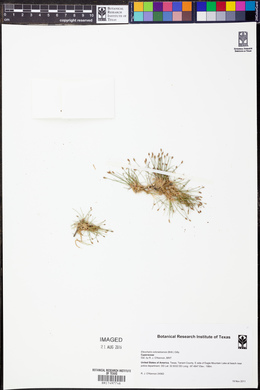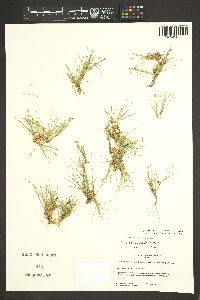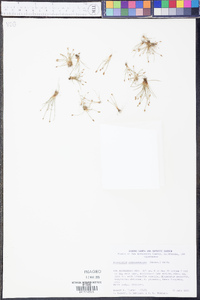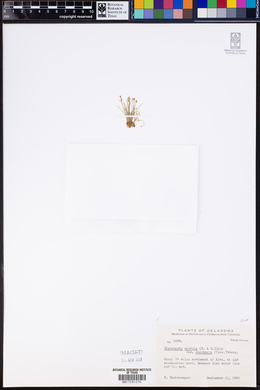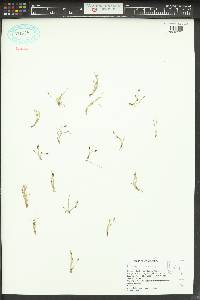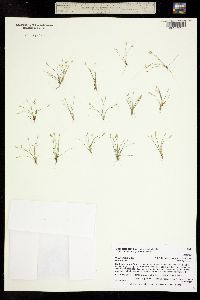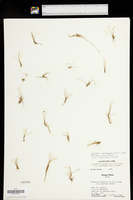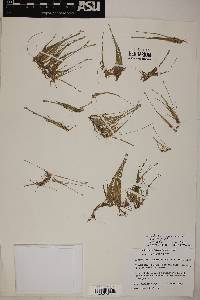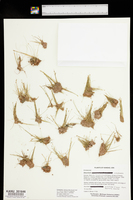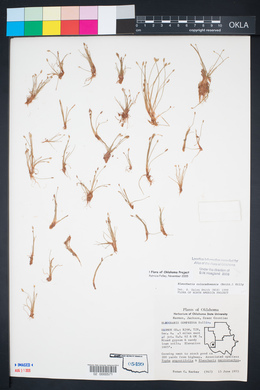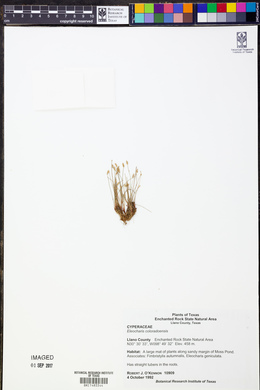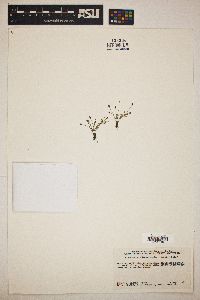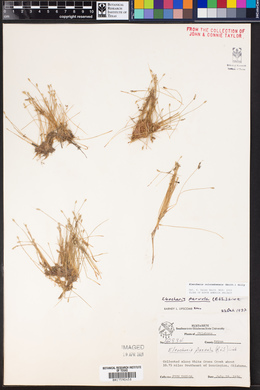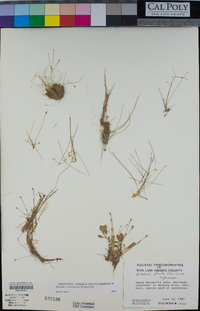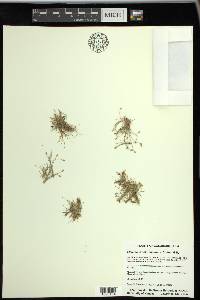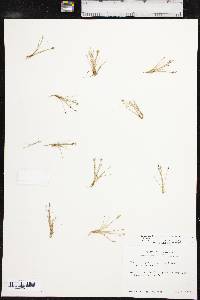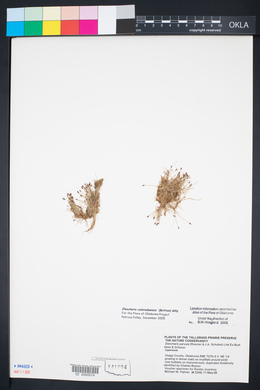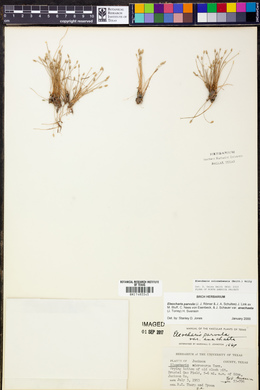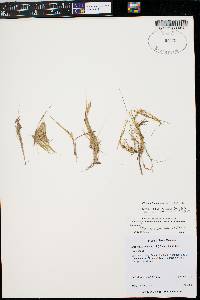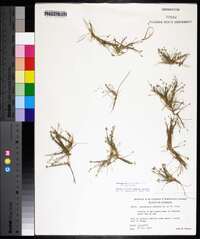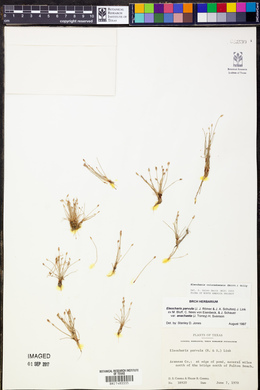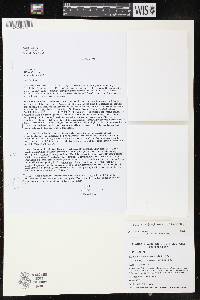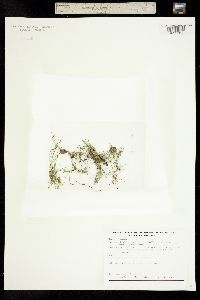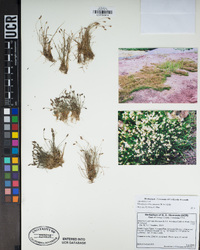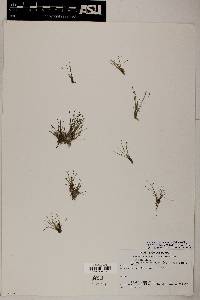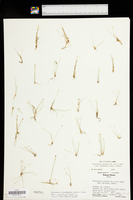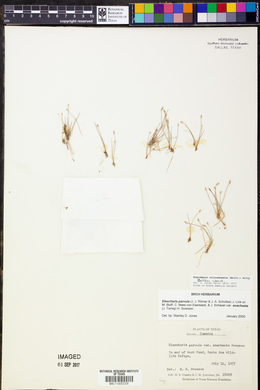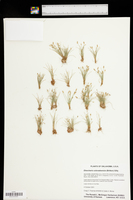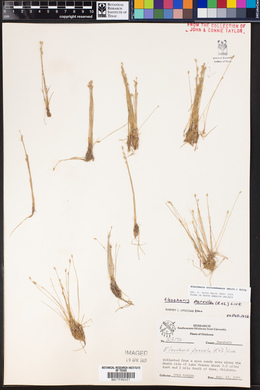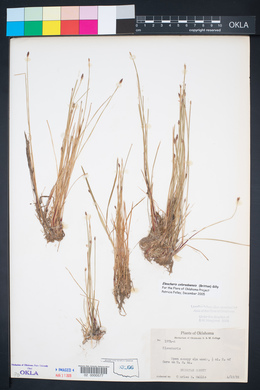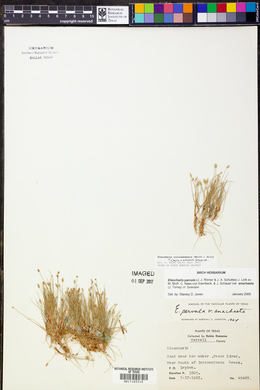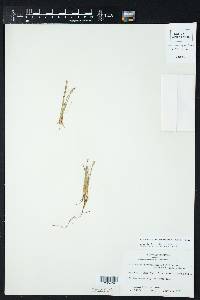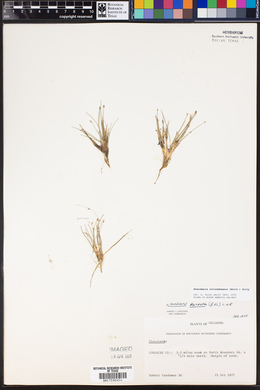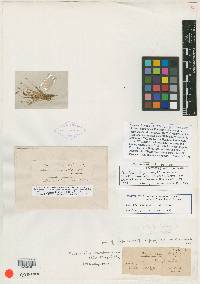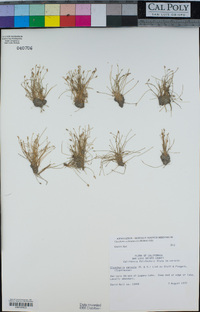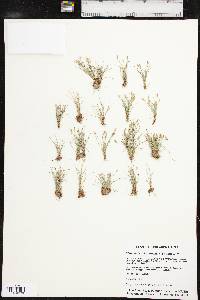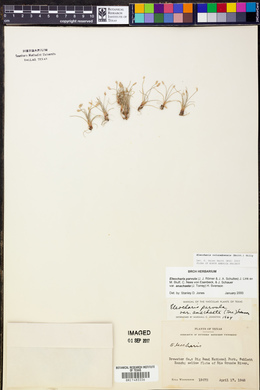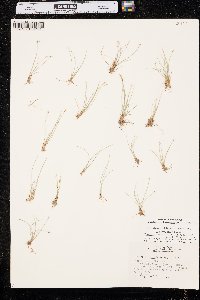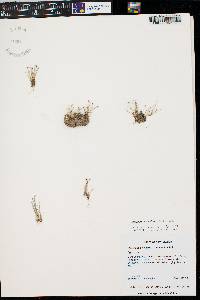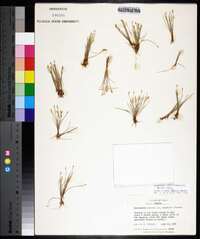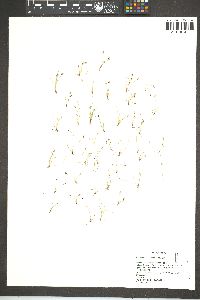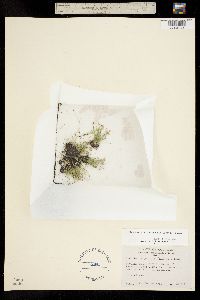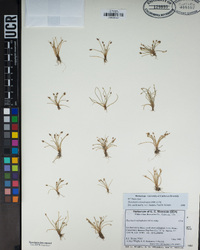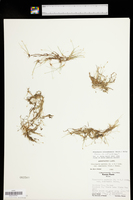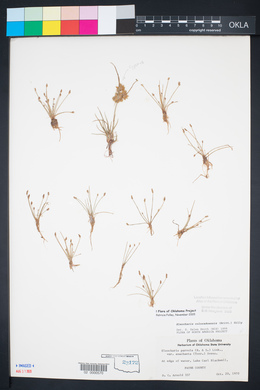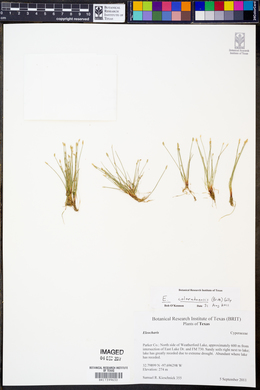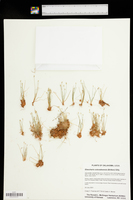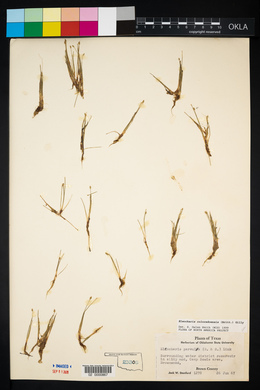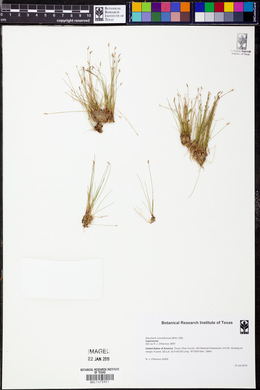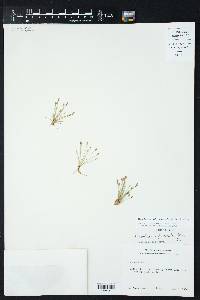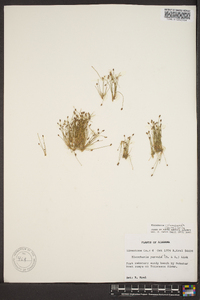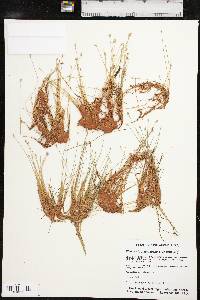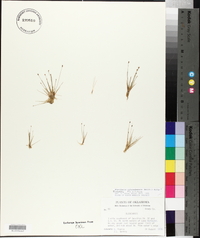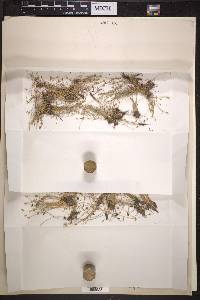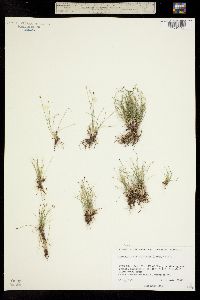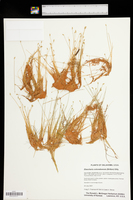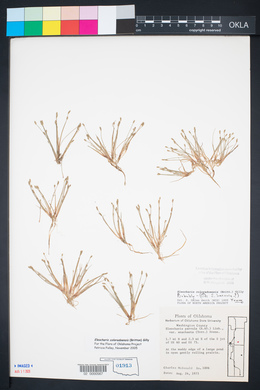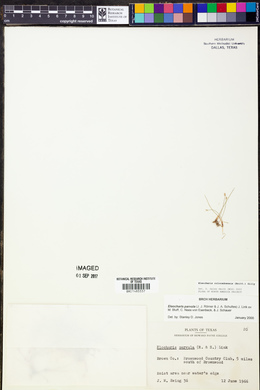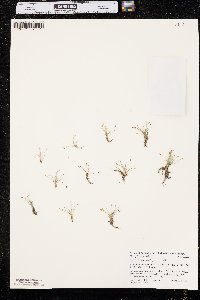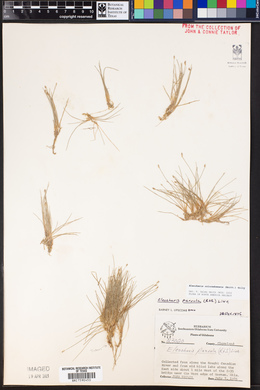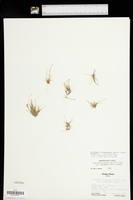
|
|
|
|
Family: Cyperaceae
[Eleocharis parvula var. anachaeta (Torr.) Svens., moreEleocharis pygmaea var. anachaeta] |
Tubers terminating rhizomes, 2.5-4 × 0.7-1.5 mm, body (apart from apical bud) broadly oblong to orbicular, not markedly curved. Spikelets 3-6 × 1-1.5 mm; proximal scale 1/2 or less of spikelet length; floral scales 6-25 per spikelet, mostly bright orange-brown, sometimes stramineous, 1.7-2.5 mm, apex subacute. Flowers: perianth bristles mostly absent or rudimentary, occasionally to 5, 1/2 of achene length, very unequal; anthers 0.6-0.9 mm. Achenes medium to dark brown, obovoid to obpyriform, thickly trigonous, rarely some biconvex, angles distinct to prominent, faces convex or some plane, 0.75-1.1 × 0.55-0.7 mm, apex narrowly truncate or tapered into tubercle, rugulose at 10X to finely rough at 30X. Tubercles 0.05-0.2 × 0.15 mm. Fruiting summer-fall (north), spring-fall (far south). Fresh or brackish drying lake and pond margins, stream beds, flood plains, vernal pools, irrigation ditches, tidal wetlands; 0-2100 m; Man., Sask.; Ala., Ark., Calif., Colo., Idaho, Iowa, Kans., La., Minn., Miss., Mo., Nev., N.Mex., N.Dak., Okla., Oreg., S.Dak., Tex., Utah; Mexico. Most authors, except C. L. Gilly (1941), H. L. Mason (1957), and R. R. Yeo (1980), have included Eleocharis coloradoensis in E. parvula or E. parvula var. anachaeta. In typical E. coloradoensis, which occurs from Saskatchewan south to Kansas and in California to 2100 m elevation, the achenes are usually distinctly rugulose or rough, often pitted-cellular, their apices usually truncate, and the tubercles are usually brown, often rudimentary, clearly distinct from the achene, and apparently partly sunken into the achene summit. Some plants from the southern Great Plains to the Mexican border, including the type of E. parvula var. anachaeta from Louisiana, may deserve taxonomic recognition. They differ from typical E. coloradoensis in having nearly smooth achenes with the apex tapered to a tubercle that is difficult to distinguish from the achene. C. L. Gilly (1941) separated these plants as E. membranacea (Buckley) Gilly; application of that name is doubtful because achenes are lacking from the type. R. R. Yeo (1980) studied the life-history of E. coloradoensis in the Sacramento Valley, California, and showed that it can be used to control several aquatic weeds in irrigation canals. The n = 4 count reported from Kansas under E. parvula var. anachaeta (Anonymous 1964) and on voucher specimens at GH and UC, is probably erroneous; the label on a duplicate voucher specimen at NDA includes the information 'n = 3 II´s + a chain of IV' (i.e., n = 5). The record from Washington is somewhat doubtful because the specimen lacks achenes. Literature reports of E. parvula from Illinois and Tennessee may refer to E. coloradoensis; I have not seen specimens.
|
This project was made possible in part by the Institute of Museum and Library Services [MG-70-19-0057-19].
Powered by Symbiota

